April 1st, 2025
9minute read
German engineering is admittedly often amazing to behold.
But there are also times that German over-engineering will make you scratch your head in disbelief.
The Sprengpatrone had a sweet spot range of about 50 to 150 yards.
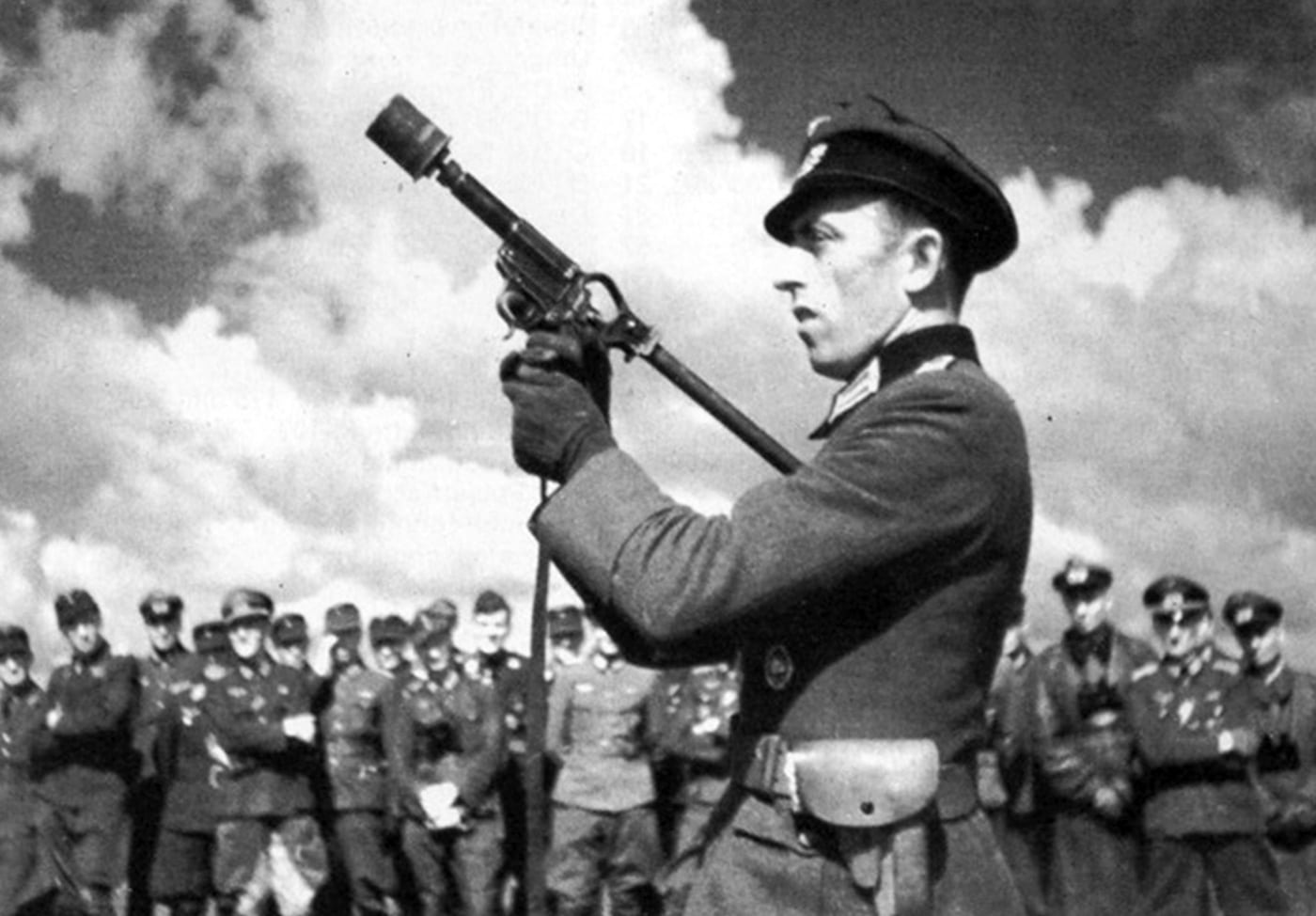
A German demonstrates how the 27mm Sturmpistole functions with its folding buttstock extended. The grenade warhead is from a standard Stielhandgranate 24 stick grenade. Image: Author’s collection
With the situation urgent, multiple ideas for man-portable anti-tank weapons came into play.
One of these was yet another step for the Walther flare/grenade-launcher pistol the Sturmpistole (assault pistol).
The Sturmpistole represented another step in the evolution of the German infantrys flare pistol.
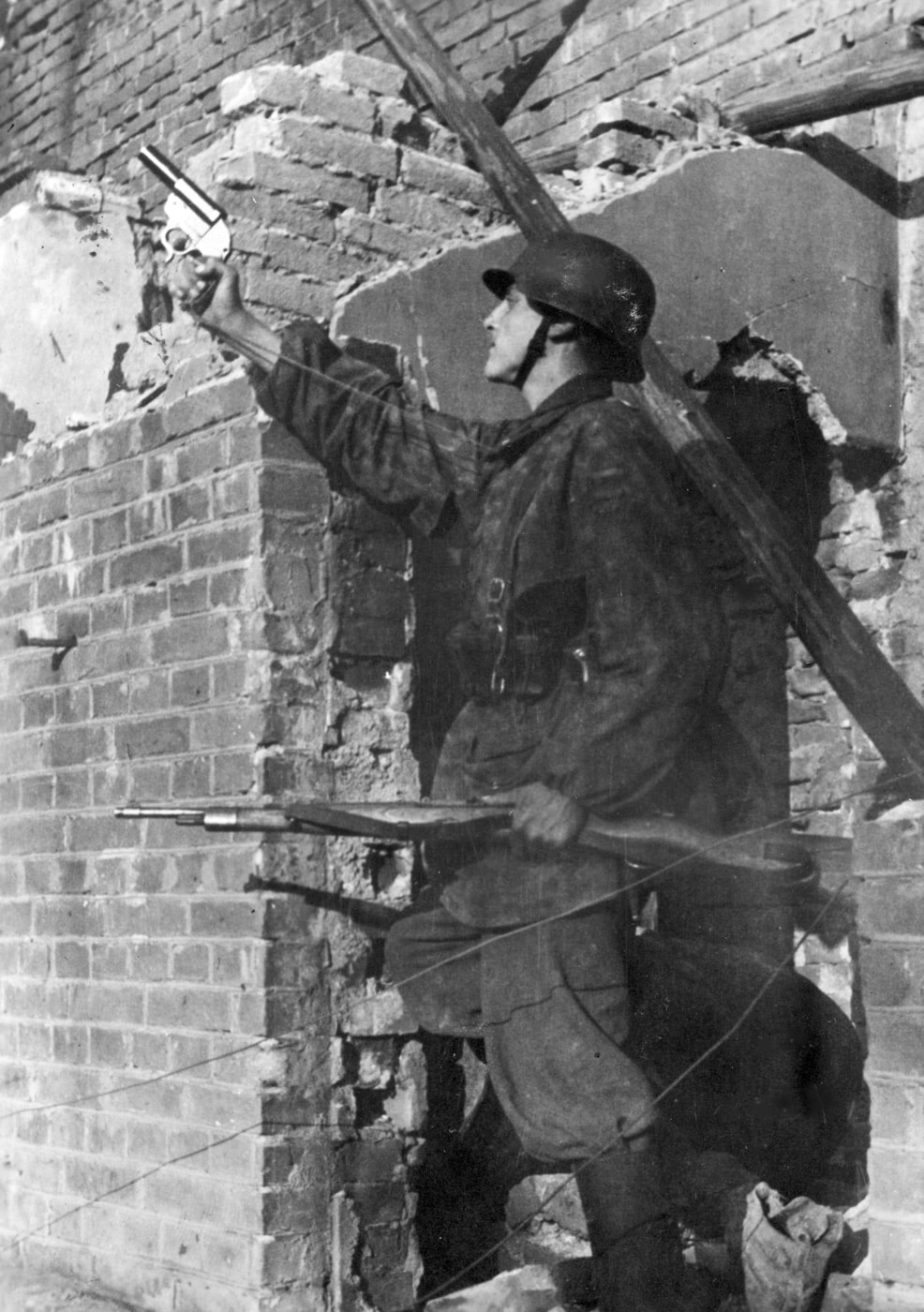
The Walther 27mm Leuchtpistole was able to fire 40 different signal cartridges as well as two grenades. It is used here by an SS trooper on the Russian Front. Image: Polish National Archives
In this case, the pistol featured a folding butt stock for stability and clip-on sights to enhance accuracy.
On paper it all looks good the Sturmpistoles weight is only 5.5 lbs.
and its length (with the butt folded) is just 12.
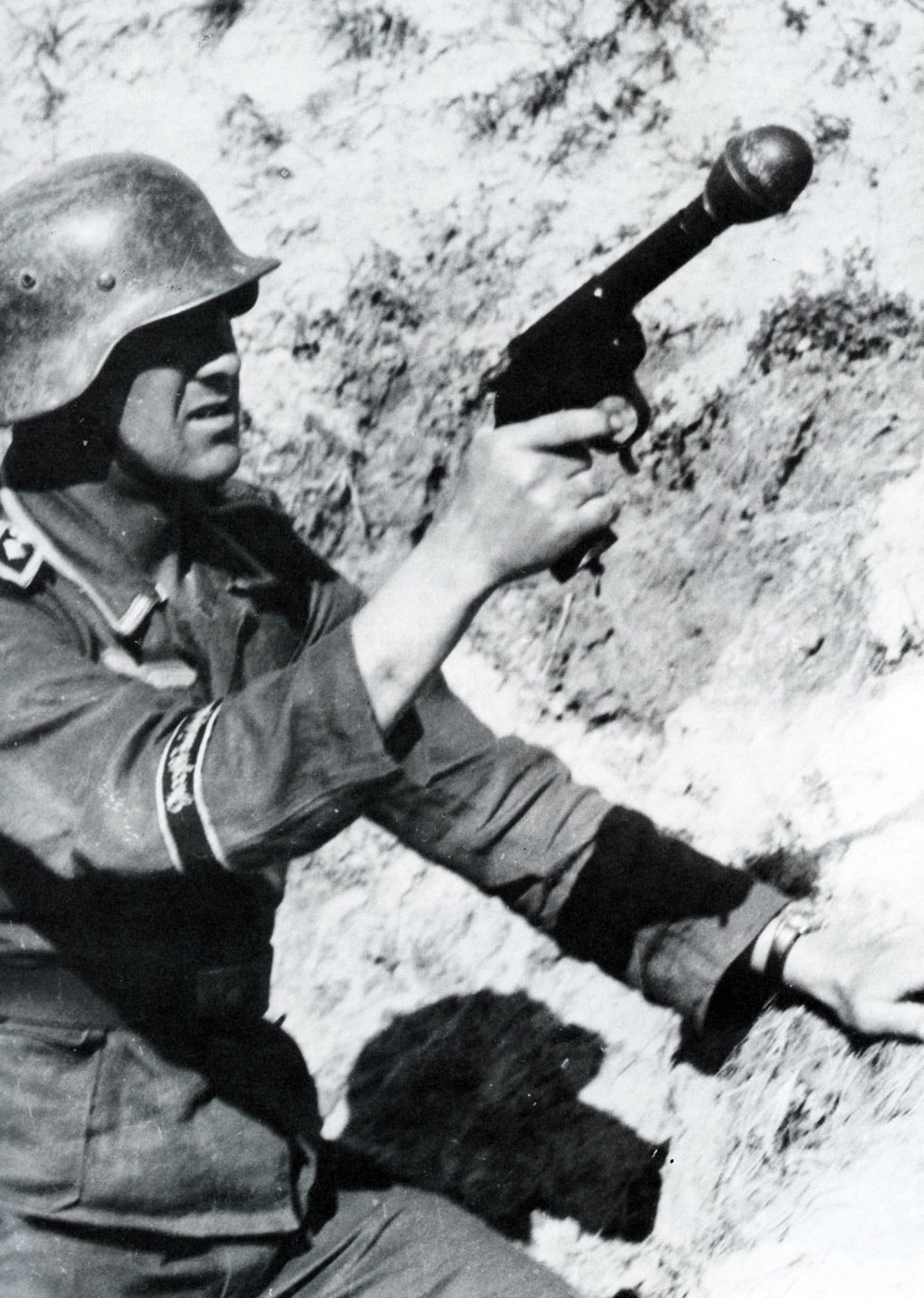
The 27mm Leuchtpistole set up to fire the Wurfkorper 361, an adapted Eierhandgranate 39 egg grenade. Image: Author’s collection
However, its capability as an anti-tank weapon left much to be desired.
Soviet estimates claim it could blast through just 50mm of armor.
To fire this grenade, the user opened the break-action pistol and inserted the propellant charge into the breech.
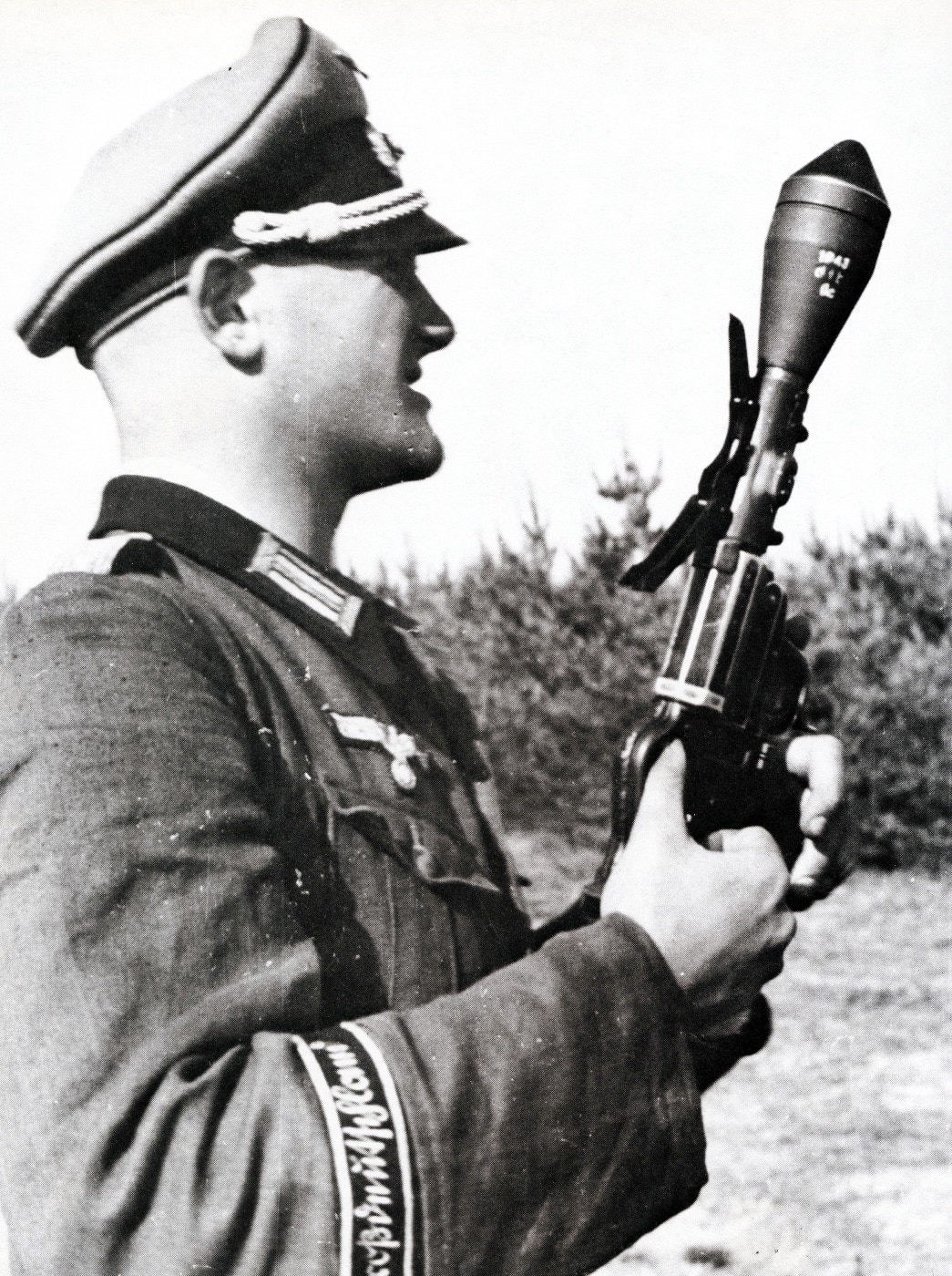
The Sturmpistole as an anti-tank weapon: The tiny Panzerwurfkörper 42 had a range of about 50 yards and could penetrate approximately 50mm of armor plate. Image: Author’s collection
The break action was then closed and the hammer cocked when ready to fire.
However, many Soviet tanks had particularly thick armor that was also well-sloped.
All the same flares and grenades are said to have been used in this configuration.
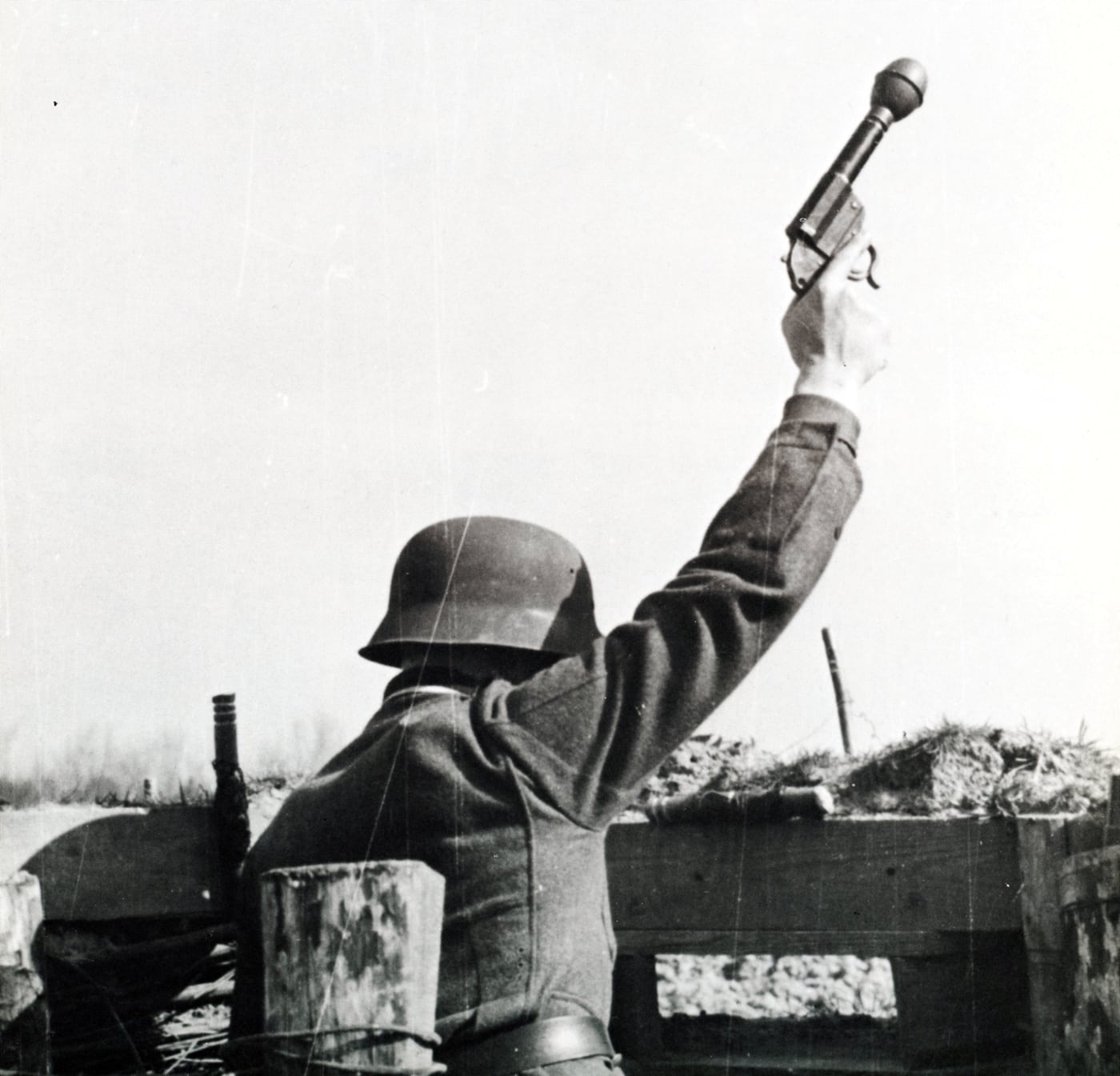
A German soldier prepares to launch a Wurfkörper 361, a modified Eierhandgranate 39 that was an egg-shaped grenade. Image: Author’s collection
Apparently, this was a field modification to approximate the folding-stock Sturmpistole.
Unfortunately, I could locate no photos of this unique grenade launcher.
Examples were captured in Italy and France, and U.S. Technical Intelligence examined them with great interest.
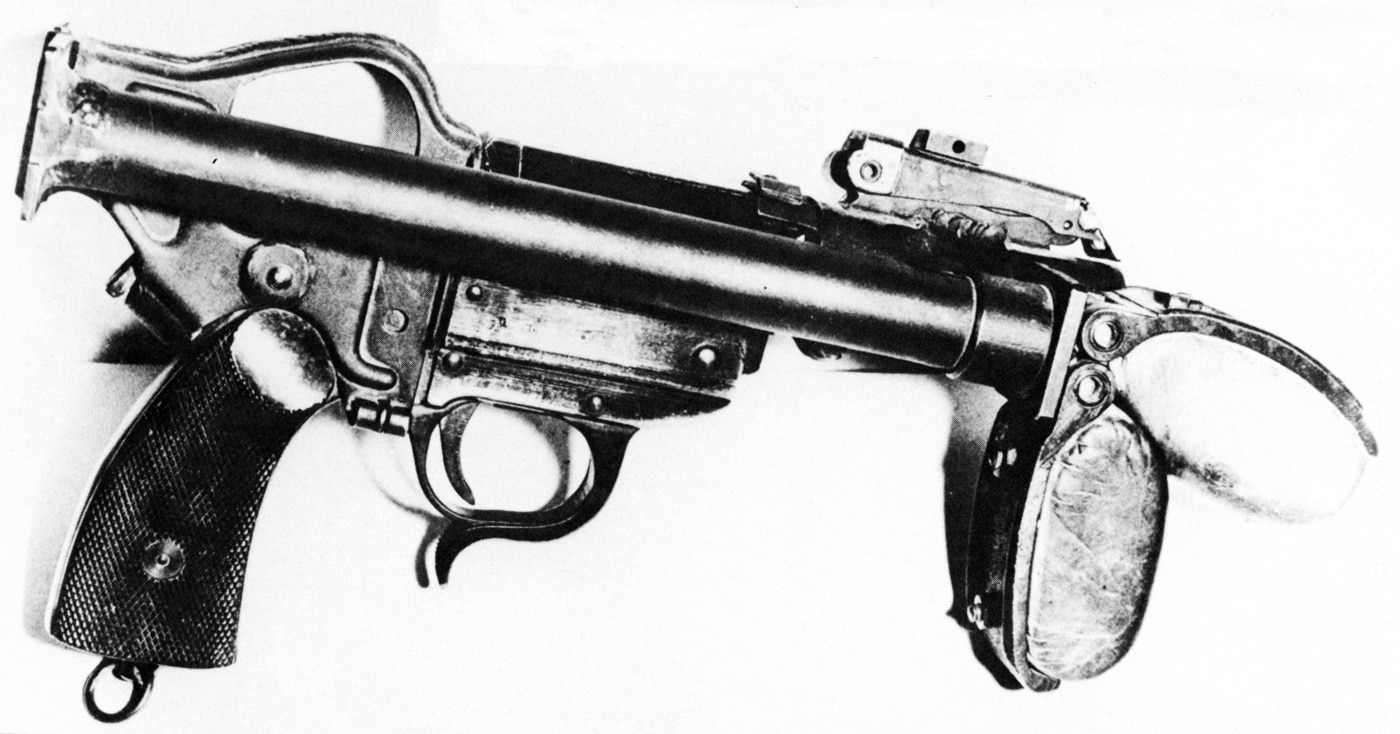
This photo of a Kampfpistole shows details of the folding shoulder stock and the offset sight. Image: Patton Museum
The following report appeared in the March 1943 edition of Tactical and Technical Trends.
The only projectile so far identified is an HE grenade with a direct-action fuse operating on impact.
One of the grenades was similar to a signal cartridge and was loaded into the breach.
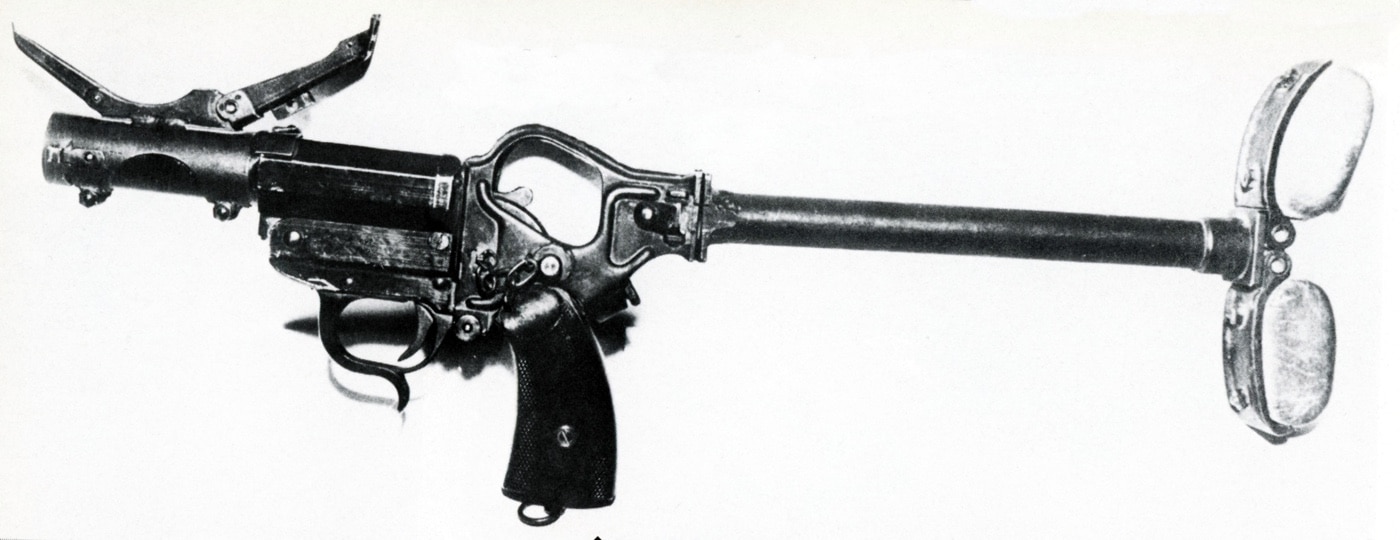
A photo of the German Kampfpistole with the shoulder stock extended. Image: Patton Museum
This tiny HE grenade weighed just 140 grams, and used a nose fuse.
The Wurfkorper 361 however, was inserted into the barrel using a special smooth-bore liner.
The grenade was created by attaching Eierhandgranate 39 to a plastic tube.
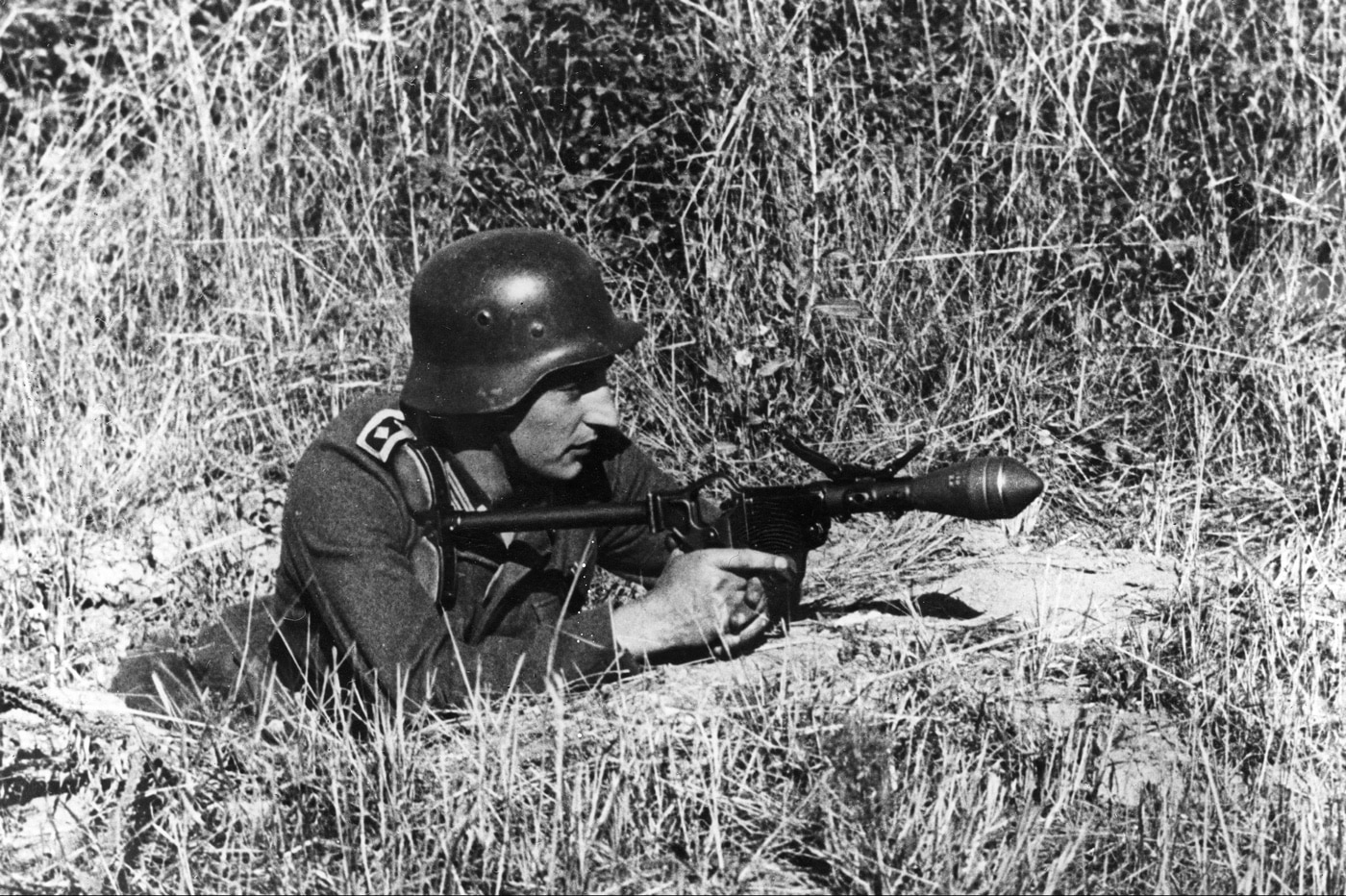
The Panzerwurfkörper 42, a tiny anti-tank weapon, could fire a hollow charge grenade that was of dubious effectiveness against Allied tanks. Image: Polish National Archives
This had a range of 75 meters and used a 4.5 second delay.
The Egg Grenade used 4 ounces of Donarit explosive not a very big bang.
The firing mechanism is of the continuous pull punch in incorporating concealed hammers.
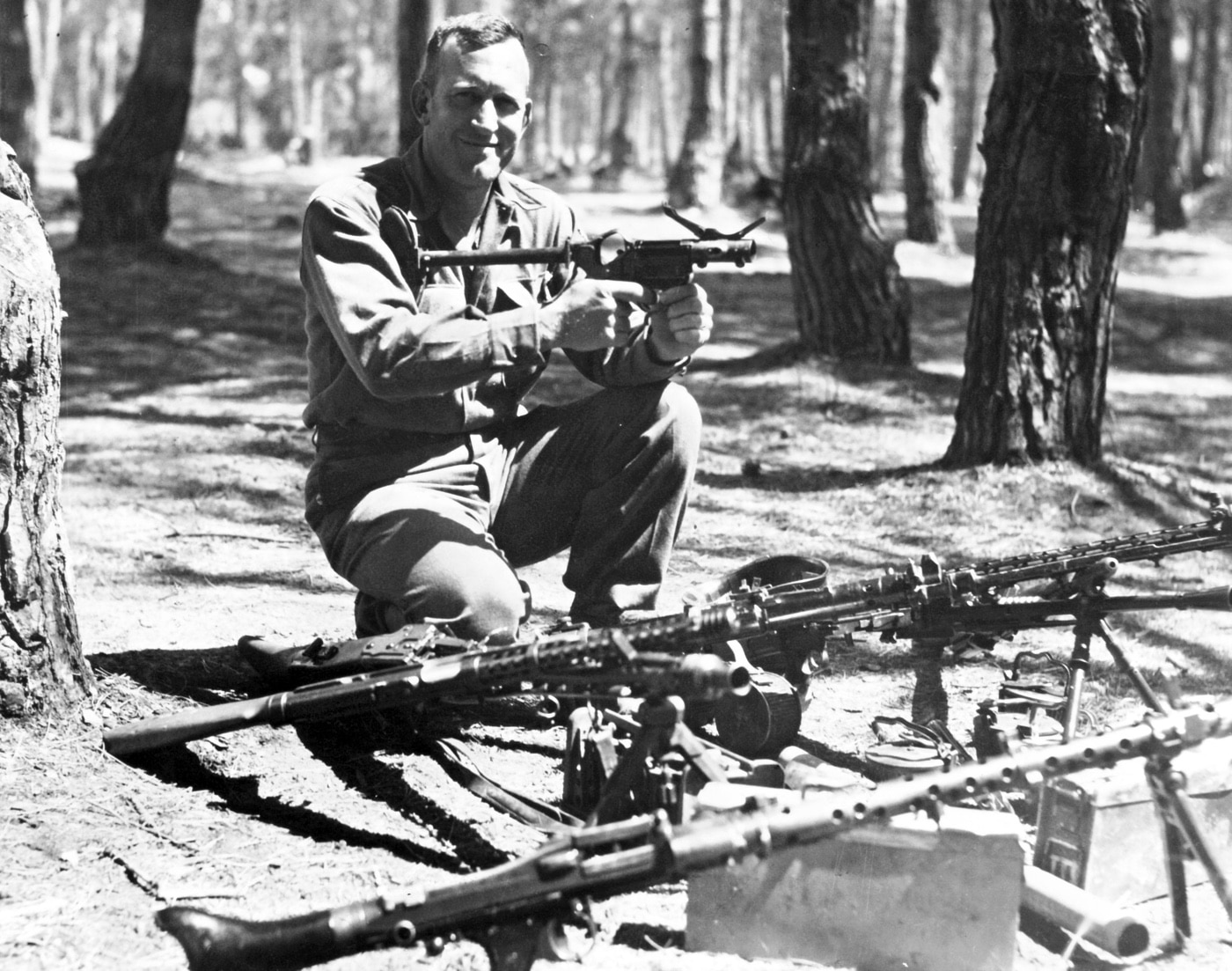
An American soldier displays a Kampfpistole captured along with a haul of German machine guns during the Battle of Anzio during the spring of 1944. Image: NARA
A switch lever is located on the top rear of the pistol frame to control the firing mechanism.
Turning it to the right allows only the right barrel to be fired.
With the lever in the center position, both barrels fire simultaneously.
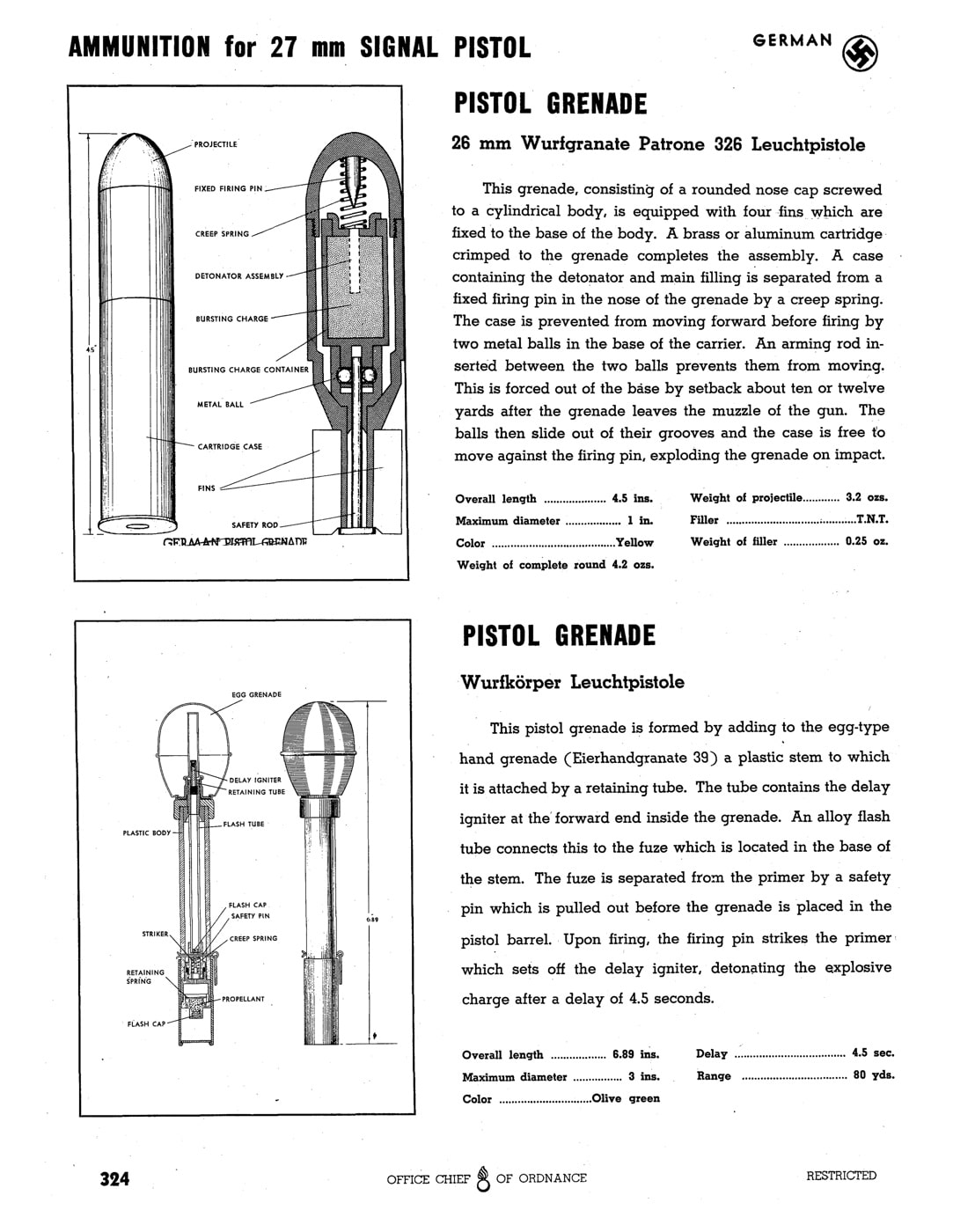
U.S. Ordnance wartime documentation on the grenades available for use on the Leuchtpistole, Kampfpistole and Sturmpistole weapons. Image: NARA
Indicator pins located in the breech plate show whether the respective barrels are loaded.
A safety lever is located on the left side of the receiver.
The words Feuer and Sicher indicate the two positions of fire and safe.
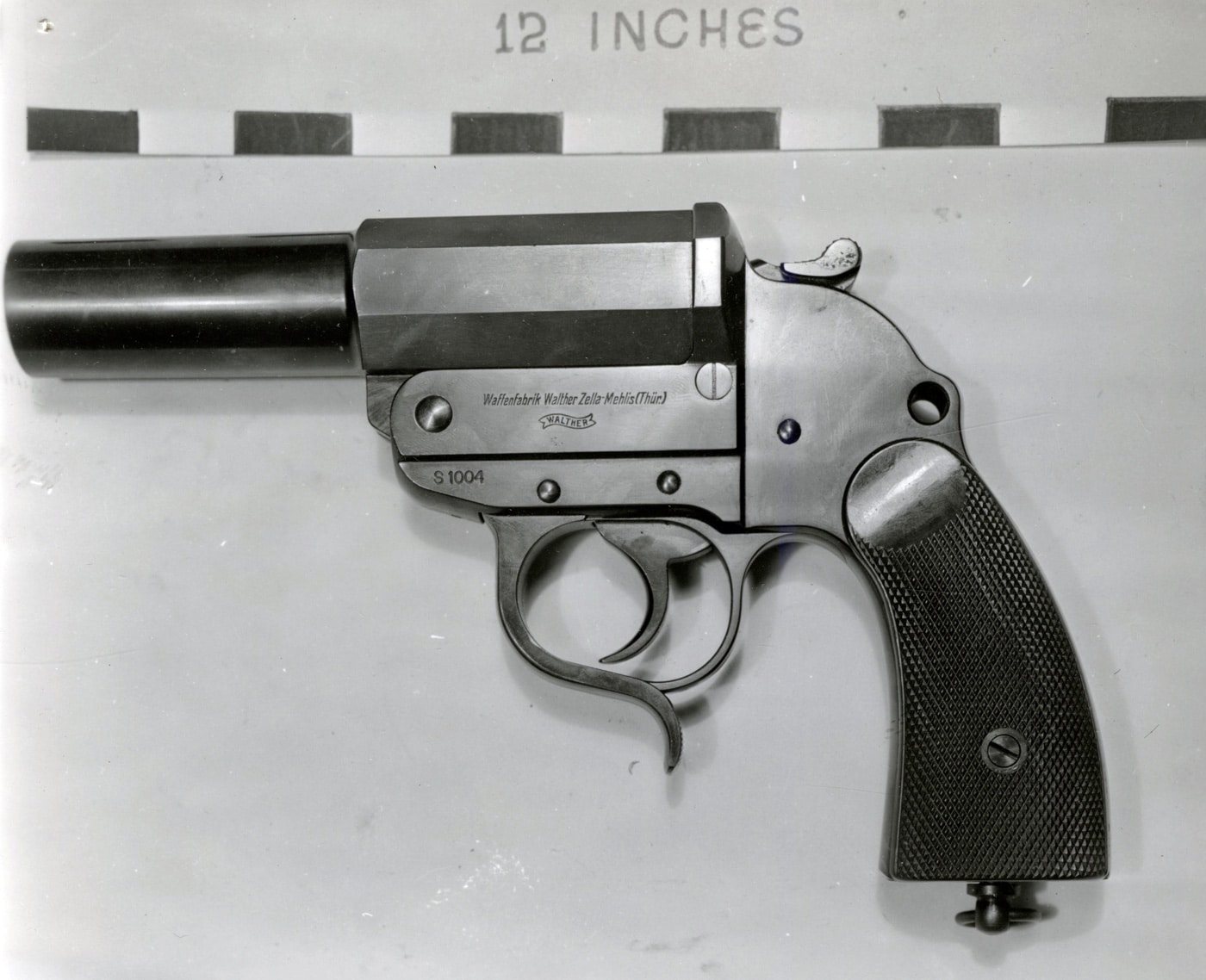
This is a clear, detailed look at the Walther 27mm Leuchtpistole used by the German military in World War II. NARA
Four specimens of the folding stock and removable sight are being evacuated to the Communication Zone.
Despite its ultimate lack of effectiveness, it does make for a fascinating study in idiosyncratic engineering.
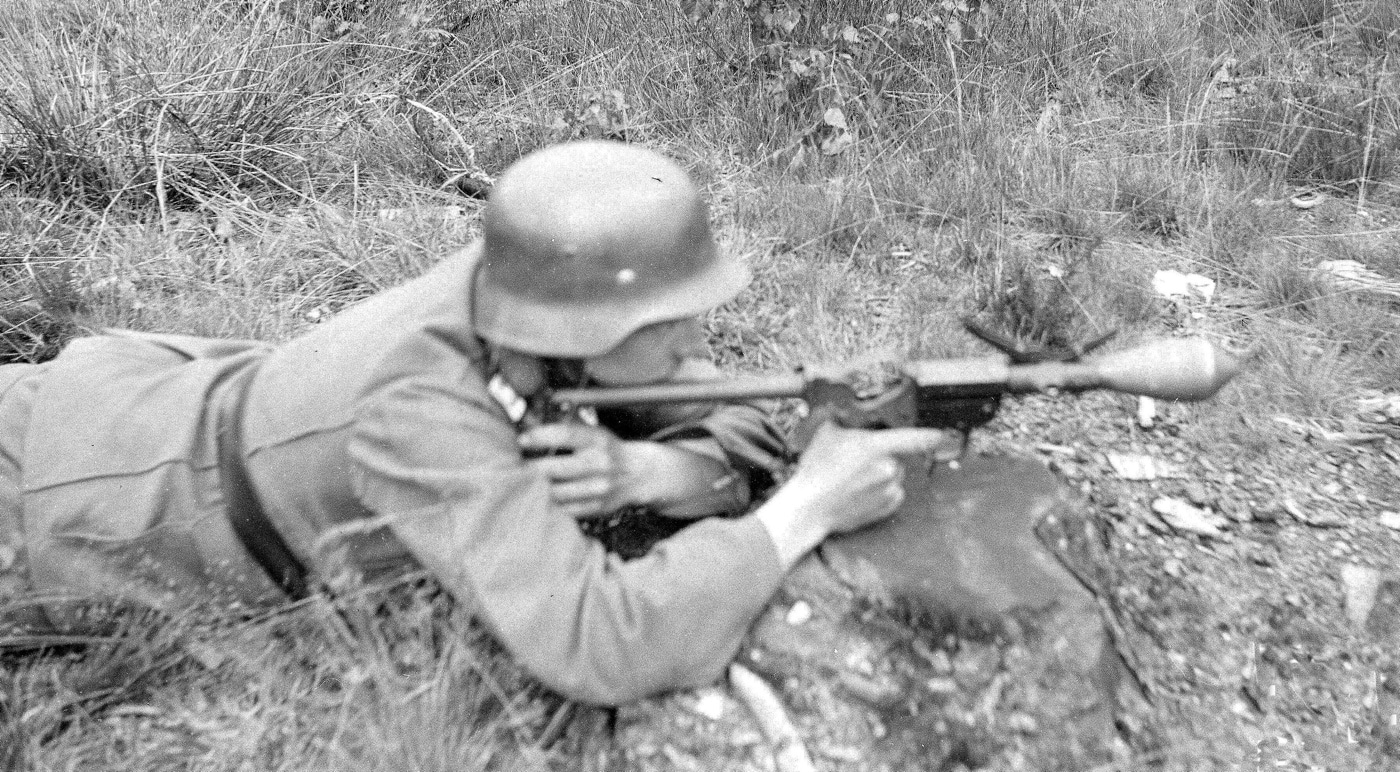
Germany exported the Kampfpistole and grenades to Finland and Hungary during World War II. Image: SA-Kuva




